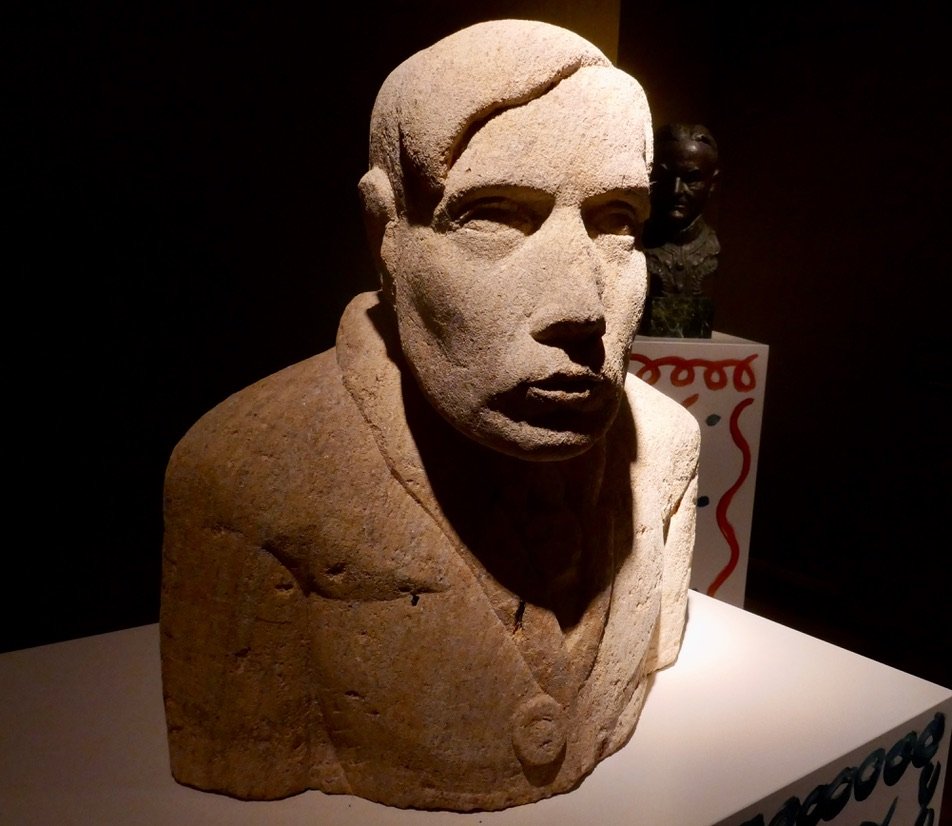Satyr among the sybarites
The Bloomsbury Stud: The Art of Stephen Tomlin. Philip Mould Gallery
Stephen Tomlin and Julia Strachey at breakfast at Mill Cottage
We all have our own sense of the Bloomsbury Group. Visually distinctive and alluring, optimistic, fundamentally grand even while living in a farmhouse. Memorable too for the short-lived Omega Workshop, and for Dorothy Parker’s smart tag of living in squares and loving in triangles. The group’s sexual freedom did not escape notice.
Charleston Farmhouse, expanded and invested in, is a considerable arts venue, while television currently loves anything to do with these pretty bright bed-hoppers. And now there’s more: the reappraisal by the Philip Mould Gallery in London of an overlooked member: sculptor Stephen “Tommy” Tomlin. This fresh appraisal follows the 2020 publication of Bloomsbury Stud, a biography of Tomlin by Michael Bloch and Susan Fox, from which the exhibition is named.
Stephen Tomlin by John Banting 1925 Courtesy The RADEV COLLECTION
Tomlin was a talented sculptor who died at 35 of alcohol and drug abuse. Nevertheless in his briefish life he made impressive busts in different materials (clay/plaster/stone) of the key players; later he also made successful decorative ceramics) . Together, the busts encapsulate the group, providing a lasting impression of those strong characters as only sculpture can. Equally impressively, and fair game since book and exhibition flag it, was Tom;in’s sexual largesse, liberally bestowed. Magnetic and widely adored, a satyr among the sybarites.
To deal with his sexual liaisons first (some presumably brief): the roster included David Garnett, Duncan Grant, Dora Carrington, Maynard Keynes, wealthy American journalist and socialite Henrietta Bingham; painter John Banting, Lytton Strachey. Tomlin also spent eight years married to Lytton’s niece Julia Strachey. One can only guess at how he fitted them all in alongside work.
Born in 1902 to a well-off, titled father, his life was always going to be privileged. Eton in 1914 then Oxford, though just two terms. Outgoing but with a tendency to depression, he befriended easily and went with the flow. After meeting sculptor Frank Dobson in Cornwall, he studied with him. Meeting David “Bunny” Garnett at a party, he was introduced to the Bloomsbury Group, into which he swept, and stayed.
Banting’s large painting of topless Tomlin, whose pouty but troubled face is a good likeness judging by the excellent film on offer at Philip Mould, makes Tomlin’s sensuality clear. His hands rest/press on his unbuttoned groin. Post or pre-coital? His face says who cares.
David “Bunny” Garnett by Stephen Tomlin at PM&Co © Philippa Stockley
During his relationships Tomlin produced vigorous work that has become part of the visual idea of Bloomsbury. The massive bust of Bunny Garnett in soft, coarse-grained limestone, which Mould describes as having an ‘Easter Island’ quality, was rescued from Charleston’s garden. Thick moss and lichen removed, faintly glinting, it glowers from a plinth. It is the only head directly carved, with strength and a few chisel holes. A smooth round red head of Henrietta Bingham with whom Tomlin had a lengthy on-and-off relationship is different from anything else. Dora Carrington remarked on Bingham’s round face, her mannish attractiveness. Here they are. The more-than-lifesize bust of Lytton Strachey in tinted plaster (the bronze is in the Tate), is a work apart.
Lytton Strachey plaster bust. Stephen Tomlin, at PM & Co © Tracy Jones
Tomlin pressed and layered hundreds of small flat clay pellets to make a head that looks down witheringly or appraisingly. Tomlin worked on this in a studio at Strachey’s house. It is thoughtful; slow. The famous beard follows one around the room.
Tomlin working on the Strachey bust at Ham Spray (Strachey’s home) 1929
After this frank masterpiece he finished the set with a Virginia Woolf that, like that of Strachey, has become a key image. Pelting through styles towards modernism as if aware there was no time to dally, by the Woolf bust he was light years away from his early, more figurative work that nodded to Dobson, Degas, Rodin. Woolf is shown aloof, intellectually powerful. Mouth agape like a Fury she gazes balefully at the future; her blank eyes look towards Henry Moore. Mould, a great raconteur, tells with relish that she hated both “being peered at” and Tomlin’s “rat-riddled” studio.
Virginia Woolf by Stephen Tomlin at PM&C © Philippa Stockley
Tomlin’s busts are set off by a satisfying set of paintings for sale by other members of the group, from Vanessa Bell and Duncan Grant (his slant-eyed, definitive bust is also here), to Jungle Still Life, a superbly controlled orgy of flowers, shell and serpent by Nina Hamnet.
Jungle Still Life by Nina Hamnet. For sale at PM&Co. © Philippa Stockley
The book The Bloomsbury Stud is also available. What a timely and informative treat, and for those with deep pockets, an opportunity.
The Bloomsbury Stud: The Art of Stephen Tomlin
Exhibition runs 5 June -11 August 2023 at Philip Mould & Co, 19-20 Pall Mall, London SW1.
No pictures may be taken from this blog to reproduce elsewhere.







